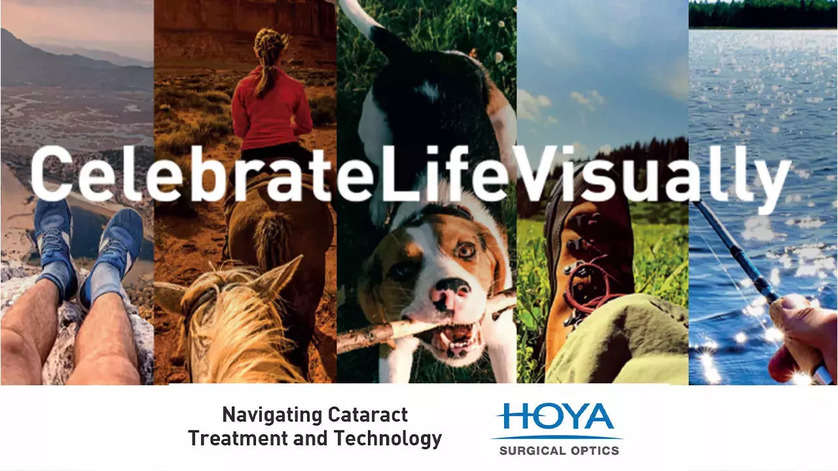- News
- Cataract Surgery: Myths vs. facts
Cataract Surgery: Myths vs. facts
Cataracts are one of the leading causes of vision impairment, especially among older people. Despite being a routine and highly successful procedure, cataract surgery is surrounded by myths and misconceptions that may delay or deter people from seeking timely treatment. In current modern-day practice, uncomplicated cataract surgery is a “no stitch, no bandage, no injection, walk-in” surgery. In this article, the aim is to separate myths from facts and highlight the incredible advancements in cataract surgery.
Myth 1: Cataracts must be “ripe” before surgery
Poll
What Concerns People Most About Cataract Surgery?
Fact:
Gone are the days when cataracts had to reach an advanced stage before surgery. Modern advancements in ophthalmology allow cataracts to be treated at any stage, ensuring optimal visual outcomes and reducing the risk of complications. Delaying surgery can lead to increased difficulty in daily tasks and potentially complicate the surgical process.
Myth 2: Cataract surgery is painful
Fact:
Cataract surgery is a minimally invasive procedure performed usually under topical or drop anesthesia, ensuring that patients feel no pain during the operation. In certain instances, cataract surgery might be performed under peribulbar injection a form of local anesthesia. Advanced techniques like femtolaser assisted cataract surgery, phacoemulsification, combined with premium intraocular lenses (IOLs), ensure a smooth and comfortable experience.
Myth 3: Recovery takes a long time
Fact:
With modern surgical techniques, recovery from cataract surgery is swift. Most patients resume daily activities within a few days. Minor precautions, such as avoiding splashing of water into eye, or exposure to dust, are necessary, but the recovery period is short, and improvements in vision are often immediate.
Myth 4: Cataract surgery is risky and can lead to blindness
Fact:
Cataract surgery is one of the safest and most commonly performed surgeries worldwide, with a success rate exceeding 98%. Technological advancements like femtosecond laser-assisted surgery and high-quality IOLs have further enhanced safety and precision, reducing risks to an absolute minimum.
Myth 5: Cataracts can recur after surgery
Fact:
Once a cataract is removed, it cannot recur. However, some patients may experience posterior capsule opacification (PCO), a clouding of the posterior lens capsule that holds the intraocular lens. PCO is easily treated with a quick, painless, OPD based, non-invasive laser procedure called Nd:YAG capsulotomy.
Myth 6: Cataract surgery has to be done in the winter season
Fact:
There is no season as such for cataract surgery. It can be performed in any season throughout the year with the same safety and efficacy.
Myth 7: Cataracts are preventable
Fact:
Cataracts are primarily an age-related condition and cannot be prevented entirely. However, measures like wearing UV-protective sunglasses, maintaining a healthy lifestyle, and avoiding smoking can reduce the risk or delay their onset.
Myth 8: Cataracts can be cured with eye drops
Fact:
No scientific evidence supports the claim that eye drops can cure cataracts. Surgery is the only effective treatment for removing cataracts and restoring clear vision.
Myth 9: One has to stay in the dark after cataract surgery
Fact:
Patients do not need to stay in the dark after cataract surgery. While it is advisable to wear protective dark glasses for a few days outdoors, normal activities can be resumed quickly.
Myth 10: One should not eat spices or dairy products after cataract surgery
Fact:
There are no specific dietary restrictions following cataract surgery. Patients can enjoy a routine, healthy balanced diet, including spices and dairy products.
Myth 11: Lenses should not be implanted during cataract surgery
Fact:
Implanting an intraocular lens (IOL) during cataract surgery is an integral part of the procedure. IOLs replace the cloudy natural lens, restoring clear vision.
Selecting the right lens for your needs
Cataract surgery today offers a variety of IOL options, designed to meet individual visual requirements and lifestyle preferences:
⦁ Monofocal IOLs: Provides clear vision at a single distance, typically for far vision.
⦁ Enhanced Monofocal IOLs: Delivers improved intermediate vision along with far vision.
⦁ Extended Depth of Focus (EDOF) IOLs: Offers continuous focus from distance to intermediate vision with less dependence on glasses.
⦁ Trifocal IOLs: Ensures clear vision across near, intermediate, and far distances, providing greater independence from glasses.
⦁ Toric IOLs: Monofocal or trifocal toric IOLs, specifically designed to correct astigmatism, offer clear vision.
Preloaded IOLs: Precision and safety
The introduction of preloaded IOL systems represents a major advancement in cataract surgery. These lenses come pre-packaged in sterile injectors, significantly reducing contamination risks while ensuring precise placement. This translates to safer procedures, faster recovery times, and better patient visual outcomes.
Towards a future of clear vision

Cataracts affect millions, particularly in India’s aging population. Public awareness and timely intervention are essential to prevent vision loss. “Eyesight is a precious asset,” says Dr. Mahipal Sachdev. “By adopting a healthy lifestyle, protecting eyes from UV rays, and ensuring regular eye checkups, we can enjoy clear vision well into our later years.”
For more information on cataract prevention and treatment, consult your ophthalmologist or visit Centre for Sight to explore advanced treatment options.
The article has been authored by Dr. Mahipal Sachdev, Chairman and Medical Director, Centre for Sight.
*Issued in public interest by Hoya Surgical Optics
Disclaimer: The views and opinions expressed in the story are independent professional judgments of the doctors/experts, and TIL does not take any responsibility for the accuracy of their opinions. This should not be considered a substitute for medical advice. Please consult your treating ophthalmologist for more details. This article has been produced on behalf of Hoya Medical by Times Internet’s Spotlight team.
End of Article
FOLLOW US ON SOCIAL MEDIA
